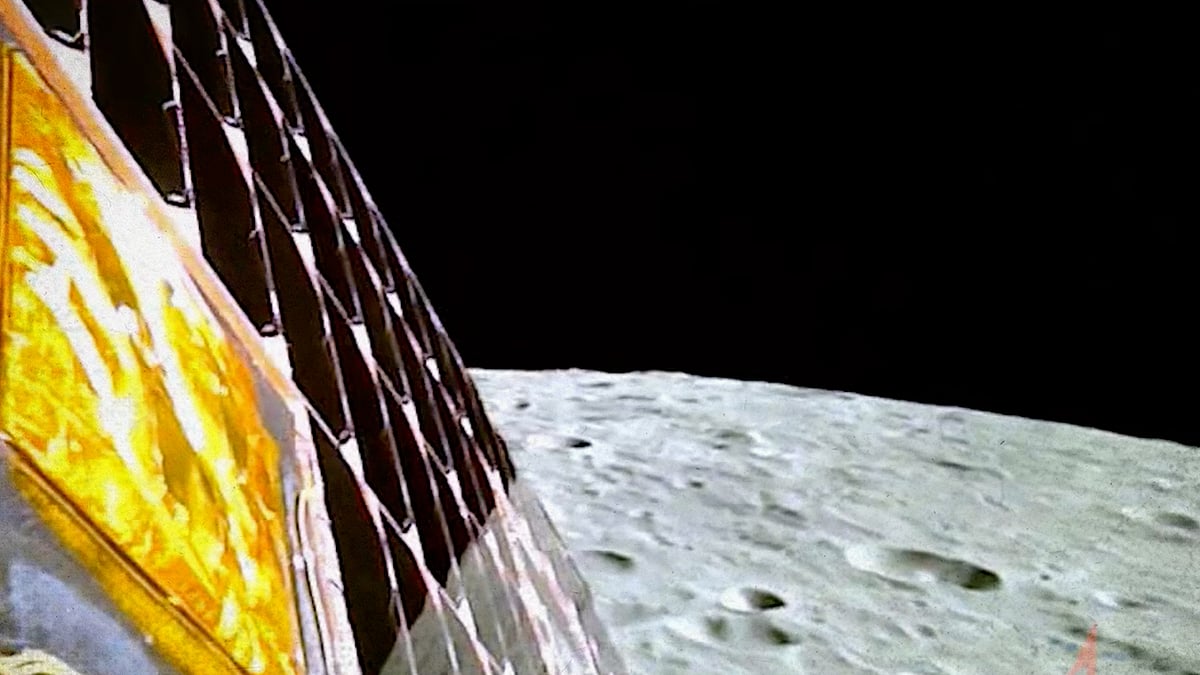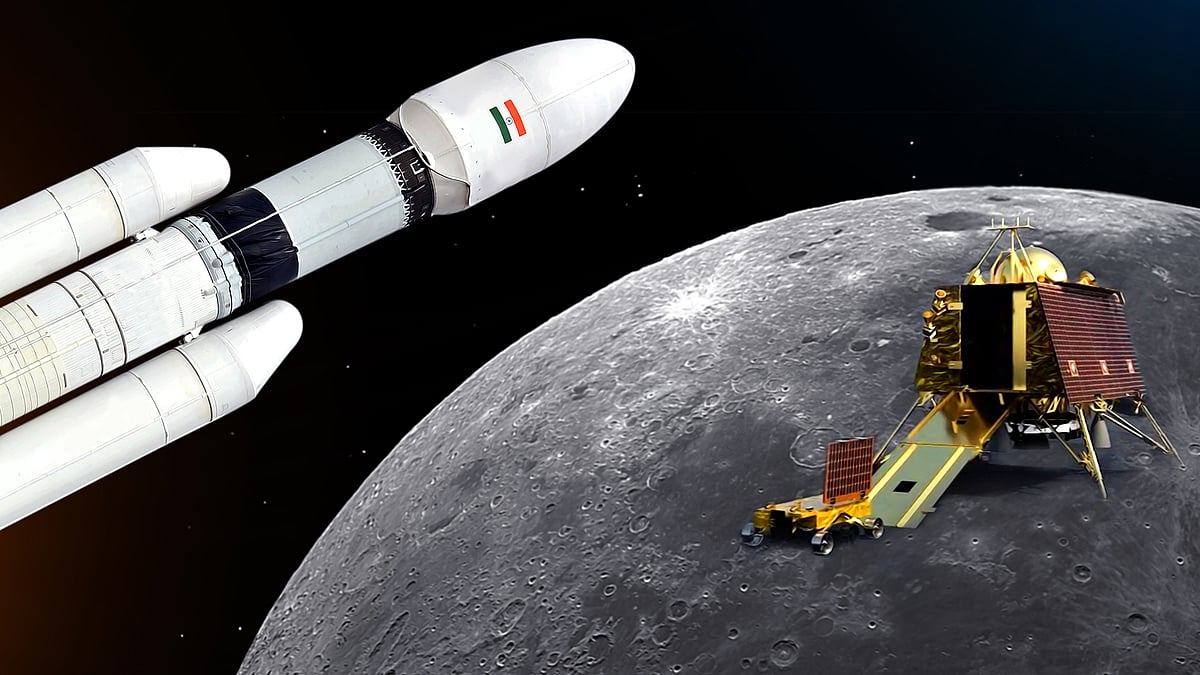Space weather, tectonic activity, solar history: All that Chandrayaan-3 is likely to unravel
The Moon’s south polar region can provide rich data about the solar system’s early history.
India is finally on the Moon. It took an arduous journey of years, a failed mission and a voyage of 40 days for Chandrayaan-3 to be the first to arrive on the Moon’s dark side or south pole on Wednesday. But why at all are we there?
Life on Earth is an anomaly, or so we assume – distinct from the other cold rock bodies strewn across the space. Our closest neighbour, the Moon, is nothing like the Earth. But it carries with itself mysteries that may not be exclusive to it, but relevant for planetary bodies across the universe.
The first aspects Chandrayaan-3’s accompanying equipment is likely to study about the Moon are its internal structure, atmosphere and geochemical composition. These will not only aid our understanding of the tectonic activity on the Earth, but also its interaction with space weather, and early history of the solar system.
With the spacecraft’s touchdown on the lunar surface, at least two objectives of ISRO’s third space mission are accomplished. These not-so-humble tasks were to exhibit its capability of a soft landing and successful deployment of the rover. Now, the spacecraft is expected to begin scientific investigations lasting at least 14 days.
Chandrayaan-3’s seven instruments
In total, the Chandrayaan-3 has seven instruments to record the information. These instruments are placed in the Propulsion Module, Vikram Lander and Pragyan Rover.
To recap its structure, the rover is placed inside the lander module, while the propulsion module is the “rocket” that propels the structure to the Moon. The lander and propulsion modules are together called Chandrayaan.
The Chandrayaan-3’s lander module had got separated from its propulsion module on August 17, as it began to approach the Moon. Meanwhile, the propulsion module continued to remain in orbit, collecting data using the SHAPE instrument.
The instrument will take pictures of the Earth by capturing the Near-Infrared or NIR light emitted by the planet. These images, which look similar to the night vision or thermal vision camera images, will help the space explorers understand the appearance of habitable planets in NIR light. Thus, making identification of habitable planets easier.
As the spacecraft landed on the Moon on Wednesday, Pragyan rover ramped down to the lunar surface to begin its investigation. The rover, which has two instruments- APXS and LIBS, is expected to work for two weeks and subsequently die down due to battery drainage. APXS and LIBS are both spectrometers which shine light [X-ray and IR respectively] on the sample and collect the reflected light to gather information about the chemical composition of an object. The rover is set to explore and find the chemical composition of the Moon’s south polar region.
Several Moon missions have earlier characterised the lunar surface’s geology and geochemical composition. So far, more than 380 kg of lunar rock has been brought back to the Earth for examination. But these, primarily collected during the Apollo missions, have been samples taken from near equatorial regions, that too only from sites that were easy to land at.
Lunar prospector has found that the region in which Apollo missions landed were geochemically anomalous, and are not a true representative of the whole Moon.
Thus, there is a need to probe more lunar surfaces to gather better data. The south polar region is particularly fascinating as it consists of regions where the sunlight does not reach inside the craters. The rocks in such places are like a time capsule – capable of providing rich data about the early history of the solar system.
Role of the lander module
Finally, there are four instruments on the lander module: RAMBHA, ChaSTE, ILSA, and LRA. LRA is short for LASER retroreflector array, much like the reflectors behind bicycles. This equipment, that will reflect the light back at its source, will pivot a passive experiment, which means that it will be performed from Earth. A laser beam will be shot towards the Moon, and the LRA will reflect the light back towards the point it came from, and the scientists will be able to analyse that light.
There are now six retroreflectors on the Moon, including the Vikram lander’s.
The distance to the Moon can be measured to millimetre precision by noting the amount of time the light takes to travel. This will be useful to study dynamics of the Moon system, that can be further utilised to delve deeper into gravitational physics and properties of the Moon.
The other three instruments will characterise the atmosphere, surface and internal structure of the Moon respectively.
RAMBHA is an instrument that will study the near surface atmosphere of the Moon. It will examine the most abundant state of matter in the universe, an extremely ionized gas-like phase called the plasma, which the Moon’s atmosphere is full of. RAMBHA will study its source, variations, and whether this atmosphere is omnipresent.
ChaSTE will measure the thermal properties of the surface by probing the lunar surface’s topsoil. This will be the first measurement of thermophysical properties at such high latitude on the Moon.
Then is the ILSA, a seismometer which will record Moon-quakes. Seismology, after all, is the most apt geophysical tool to determine the internal structure of a planet.
From the extensive data from Apollo missions, it is known that the Moon has a crust, mantle and core. But there are several questions that have remained unanswered, and now hope is latched on to ILSA.
The Science Desk is a collaborative effort between Newslaundry’s subscribers and its editorial team.
 From the ‘Moon is Indian’ to ‘Modi first, Moon next’: Front pages on Chandrayaan milestone
From the ‘Moon is Indian’ to ‘Modi first, Moon next’: Front pages on Chandrayaan milestone  40 days of wait, 17 minutes of terror: Chandrayaan-3 becomes first to land on moon’s south pole
40 days of wait, 17 minutes of terror: Chandrayaan-3 becomes first to land on moon’s south pole